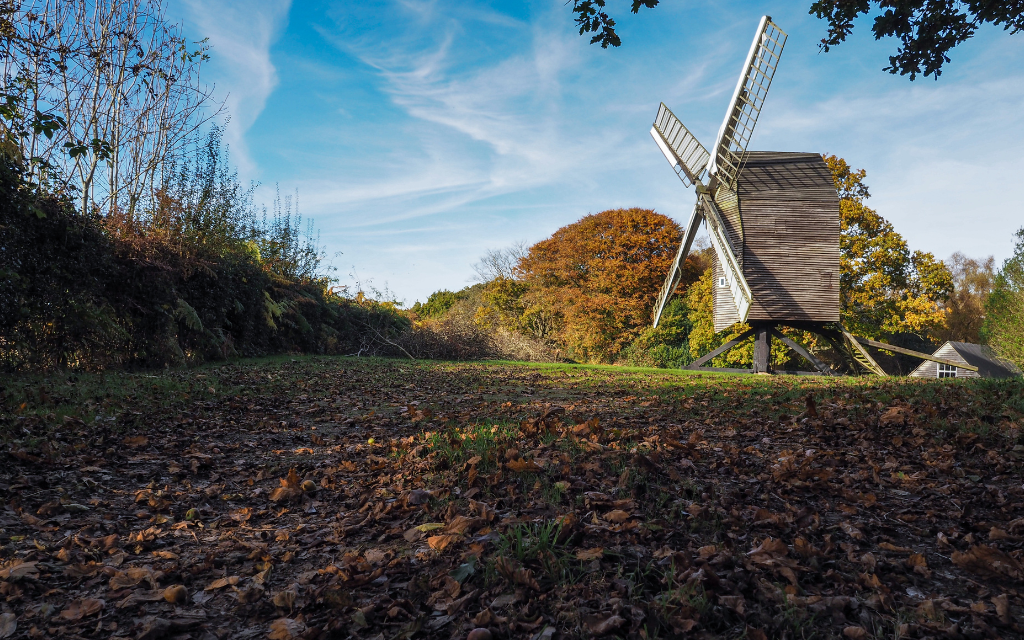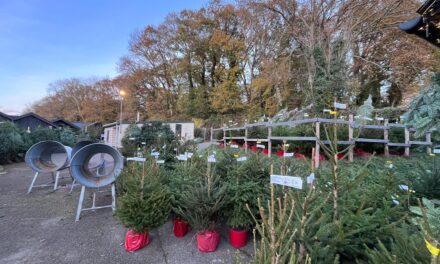Guest post by Bianca Serra
Let’s talk about windmills!
Windmills are not to be confused with wind turbines. Although both use wind energy to generate power, modern wind turbines are tall towers that have blades at the top and are connected to a vertical shaft. These blades spin when the wind blows, turning the shaft which generates power that is used by a generator to produce electricity.
Have you ever seen one of those old windmills on a walk, or in the distance? If so, here is your opportunity to learn a few interesting facts and impress your friends with some random knowledge at the next picnic or BBQ! Here you’ll find all the information you need to become the next windmill expert at your local pub quiz…in East Sussex.
So, on a more serious note, windmills are machines that have been used all over the world for centuries. They are popular because they work by simply harnessing the power of the wind. However, they were not used as much during the 19th and 20th centuries due to the use of steam and electricity. Despite this, windmills are still used today as the wind is a renewable source of energy; it’s free and in abundance so it will never run out. Windmills are also eco-friendly, as they do not produce harmful emissions and are a sustainable alternative to traditional fossil fuels.
Q: “Why was the windmill so overwhelmed?” A: “It had many types of work to do!”
There are many types of windmills, all with various jobs to do! All of them harness the power of the wind to make energy that can either mill grain into flour, pump water or generate electricity. Each type of windmill has its own unique design and purpose, with some being more suitable for certain tasks than others. Here are a few examples of different windmill types:
- Post mill: The earliest type of European windmill, where the entire structure rotates on a single vertical post.
- Tower mill: A type of windmill where the structure is fixed and only the top part, including the sails, rotate.
- Smock mill: A type of windmill that has a sloping, horizontally weather boarded tower with a rotating cap.
- Hollow post mill: A type of windmill where the vertical post is hollow and used as a storage area, to accommodate the drive shaft. This makes it possible to drive machinery outside and underneath the body whilst the body can still rotate into the wind.
- Windpump windmill: A type of windmill used to pump water from deep underground wells for irrigation and other purposes.
Where can I find windmills?
East Sussex has a rich history of windmills. Here are a few examples of different types of mills that can be found in and around East Sussex:
- Nutley Windmill (Open Trestle Post mill) is tucked away in Ashdown Forest. Built in the early nineteenth century, it was used primarily for grinding corn. The earliest record of its existence can be dated back to May, 1836.
- Polegate Windmill (Tower mill) was first built in 1817. Edwin Byatt, a famous painter, captured the windmill’s beauty in a painting and can be seen on postcards within the area. Originally, it was called Willingdon Windmill.
- Stone Cross Windmill (Tower mill) was built in 1876, by Stephen Neve. Twinned with Stone Cross Mill is the Netherlands’ ‘De Watcher’, a windmill built in 1851 and situated in Zuidlaren.
- Clayton Windmills is home to Jack and Jill. Jack and Jill are two windmills that are both open to the public and sit on the South Downs. Jack (Tower mill) was built in 1866 and was built to replace Duncton Mill. Jill (Post mill) was originally built in Brighton, 1821, but was moved to Clayton in 1852.
- West Blatchington Mill (Smock Mill) was built in the 1820s. It’s a rare 6-sided smock mill built on a tall flint and brick tower with neighbouring bars.
From pumping water and grinding grain to now being used to generating clean energy on a large scale. The evolutionary tale of windmill technology shows just how much we can appreciate the ingenuity and perseverance of our ancestors and gain insights into the potential of renewable energy for the future.




